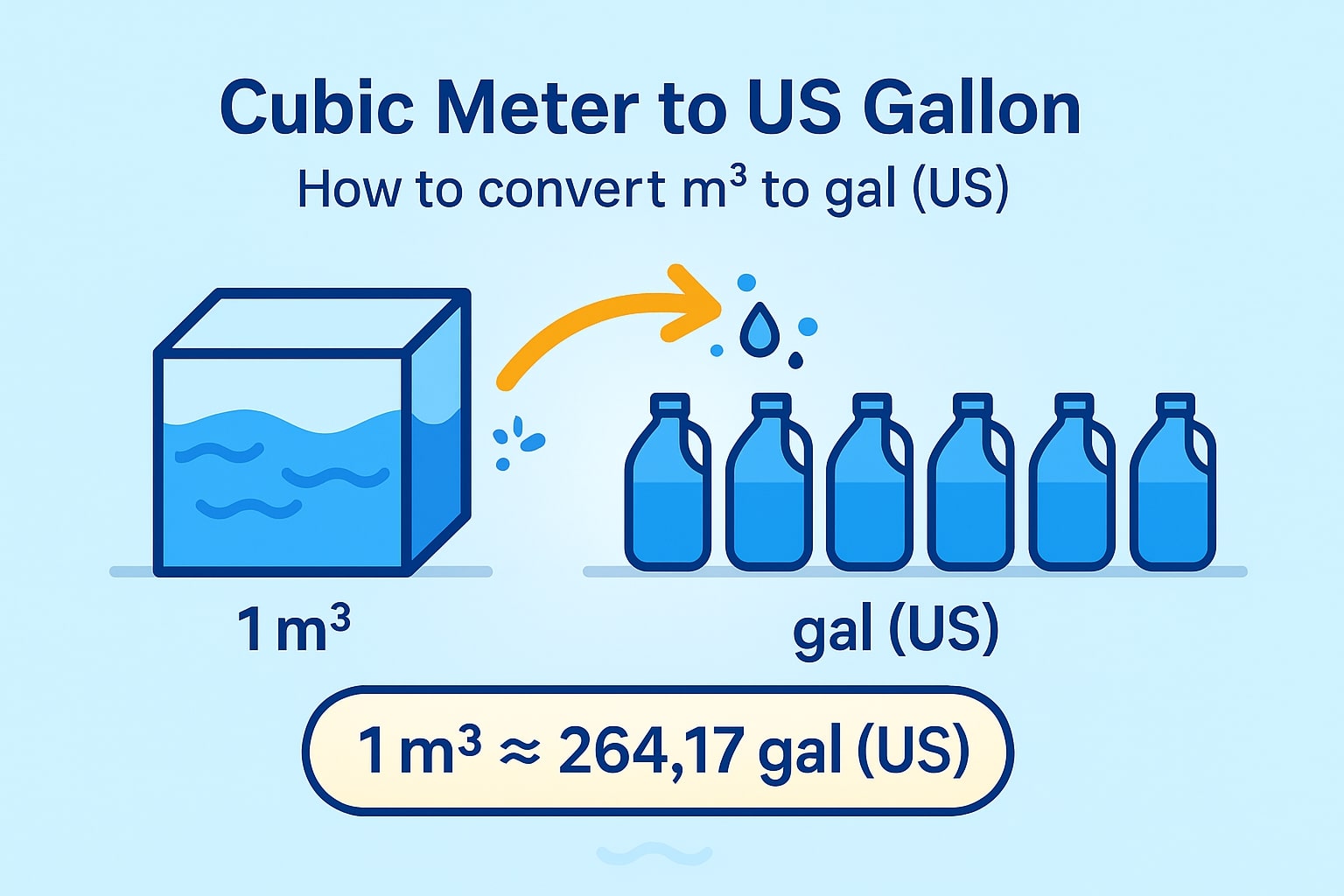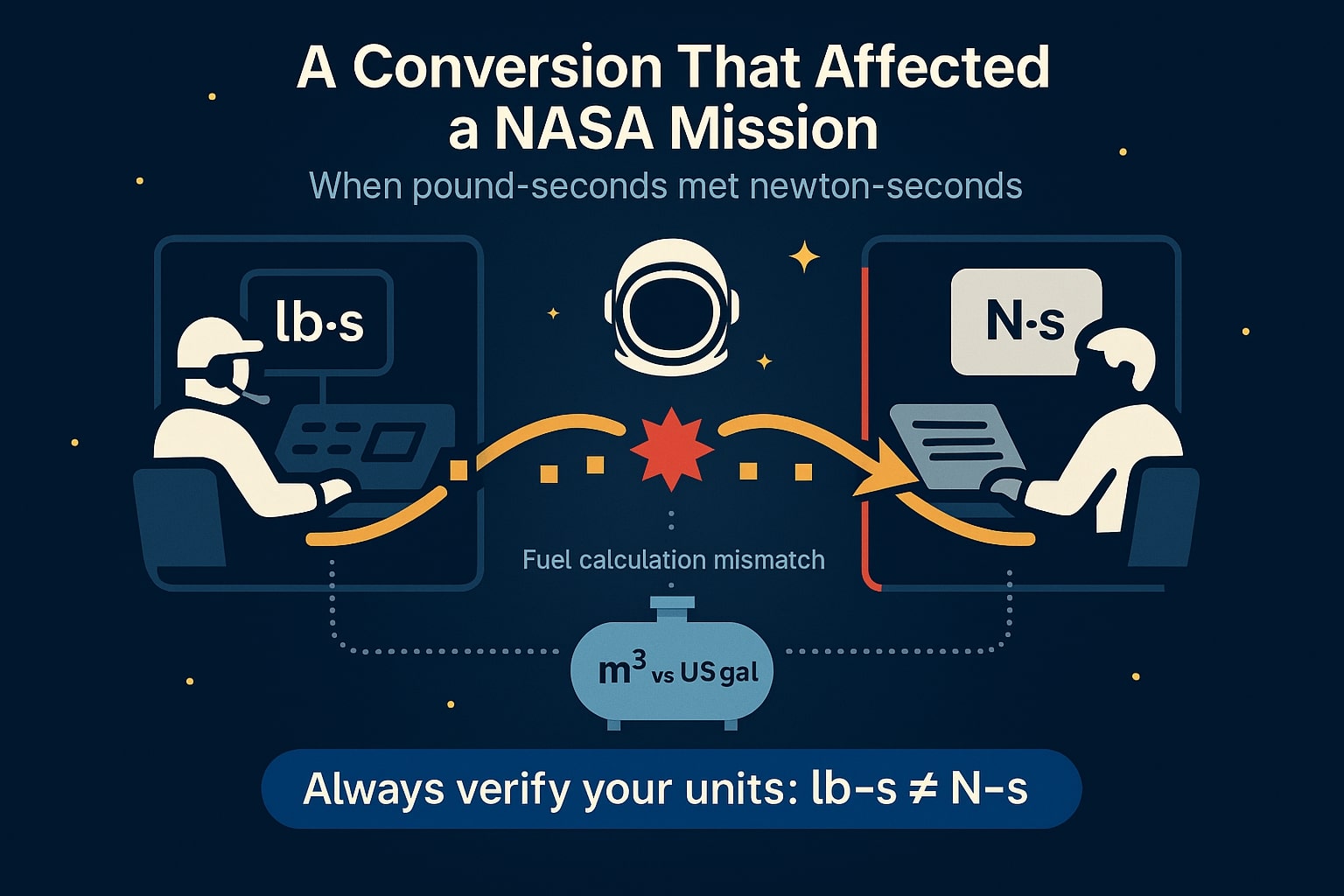cubic meter to gallon US – How to convert m³ to gal (US)
Need to convert cubic meter to gallon US? This is one of the most frequent volume conversions when working across metric and imperial systems—especially in industries like agriculture, petroleum, beverage production, and household utilities in the United States.
You can also explore more units using our Volume Converter, or check the full range at our Conversion Tool section.
What Is a Cubic Meter?
A cubic meter (m³) is the standard SI unit for volume. It represents the volume of a cube with edges one meter long. It is frequently used in:
-
Global trade and shipping
-
Water treatment and pipeline management
-
Building materials like concrete, soil, and sand
Key facts:
-
1 m³ = 1,000 liters
-
1 m³ = 35.3147 cubic feet
-
1 m³ = 1,000,000 cm³
In short, it's a large, internationally accepted measurement ideal for both liquids and solids.
What Is a US Gallon?
A US gallon (gal US) is part of the US customary system, widely used for:
-
Gasoline and other fuels
-
Milk, juice, and beverage packaging
-
Household water use and gardening
1 US gallon = 3.78541 liters, so it’s smaller than the UK gallon.
The difference in gallon sizes causes frequent confusion between US and UK conversions—something Jetcalculator helps you avoid.

How to Convert Cubic Meter to Gallon US
Here’s the fixed conversion factor: 1 m³ = 264.172 US gallons
Formula: Gallon (US) = Cubic meter × 264.172
Example:
If you have 3.2 m³ of liquid:
3.2 × 264.172 = 845.35 gallons (US)
Whether you're ordering water tanks, wine barrels, or pool volume, this conversion ensures consistency between metric and US-based systems.
Did you know?
-
A standard in-ground swimming pool holds about 66,000 gallons (US), which equals roughly 250 m³—the volume of a 10×5×5 meter rectangular tank.
-
One m³ of milk equals approximately 264 gallons—and that’s enough to fill over 2,100 cartons of milk (each 1 pint)! Imagine how many cookies that could support.
-
In the US brewing industry, volume is still commonly measured in gallons. A craft brewery producing 200 barrels of beer a week is outputting about 23,280 gallons, or 88.1 m³.
-
A 50-gallon (US) water heater is a common household appliance in America. Just one m³ can fill more than five of these—making m³ very practical when measuring for water systems.
-
The average US family of four uses about 300 gallons (US) of water per day, meaning their total monthly water usage is nearly 34 m³. That's a bathtub full per person, per day.
-
At 264 gallons per m³, one could say an Olympic-size swimming pool (about 2,500 m³) contains over 660,000 gallons of water. That’s more than 3 million bottles of soda.
-
1 gallon of gasoline in the US weighs around 6.3 pounds, so a cubic meter of gasoline (~264 gallons) weighs over 1,660 pounds. That’s heavier than a grizzly bear!
A Conversion That Affected a NASA Mission
One of the most famous failures in aerospace engineering history involved a simple unit conversion error. In 1999, the Mars Climate Orbiter was lost due to a miscommunication between teams using metric and imperial units.
One team used pound-seconds, while the other expected newton-seconds. Although the disaster wasn’t directly tied to volume, it demonstrated how easily critical projects can go awry without proper conversion—whether it’s mass, volume, or force.
In fact, volume conversions were critical in fuel calculation and spacecraft tank design. Had those involved been dealing with cryogenic fuel tanks in m³ versus US gallons, a similar mismatch could have led to overflows, combustion failures, or imbalanced payloads.
Today, both NASA and SpaceX use automated conversion protocols and tools—something any engineer, student, or hobbyist can replicate with modern converters like Jetcalculator.

Conclusion
Getting from cubic meter to gallon US isn’t just about crunching numbers—it’s about making sure your plans, projects, or even household tasks go smoothly. Whether you're figuring out how much water your new tank holds or double-checking fuel quantities, knowing that 1 m³ equals 264.172 US gallons can save you from big mix-ups.
Need help with more units? Try our Volume Converter for quick answers, or explore the full Conversion Tool to handle anything from length to pressure.
At Jetcalculator, we make complex conversions feel effortless—so you can focus on what really matters.

